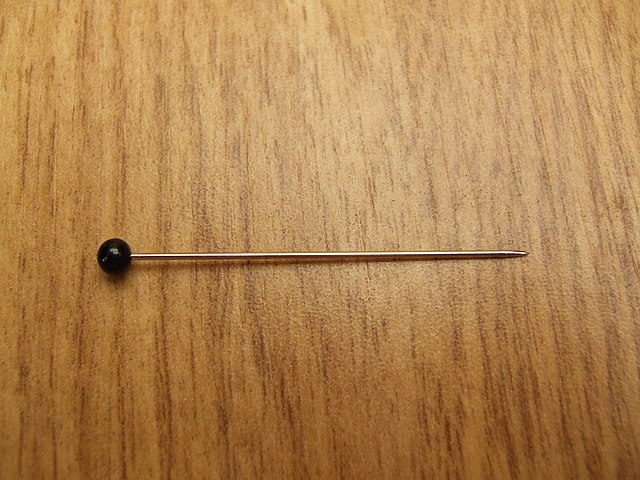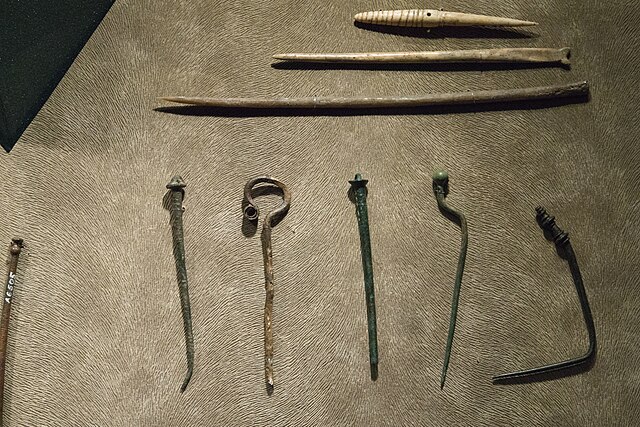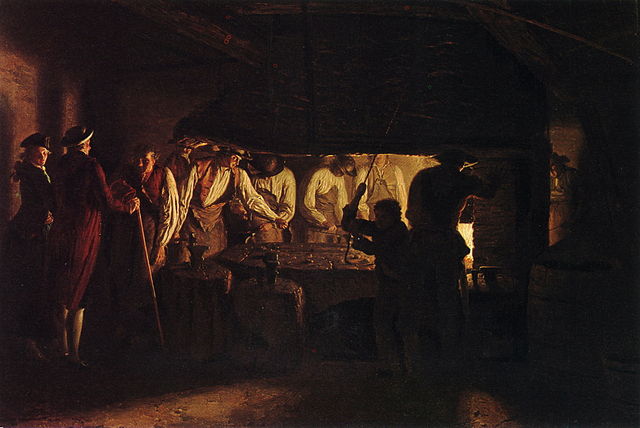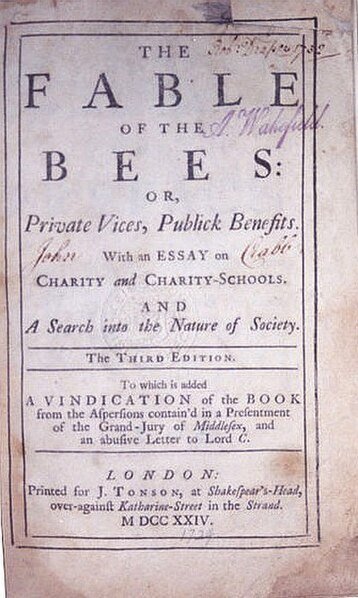A pin is a device, typically pointed, used for fastening objects or fabrics together. Pins can have the following sorts of body:a shaft of a rigid inflexible material meant to be inserted in a slot, groove, or hole
a shaft connected to a head and ending in a sharp tip meant to pierce one or more pieces of soft materials like cloth or paper
a single strip of a rigid but flexible material whose length has been folded into parallel prongs in such fashion that the middle length of each curves towards the other so that, when anything is inserted between them, they act as a clamp
two strips of a rigid material bound together by a spring at one end so that, when the spring held open, one can insert some material between the prongs at the other end that, the spring allowed to close, then clamp the inserted material.
A sewing pin
A safety pin
Push-pins in a cork board
Bone and metal pins used to fasten clothing in the Bronze Age
The division of labour is the separation of the tasks in any economic system or organization so that participants may specialize (specialisation). Individuals, organizations, and nations are endowed with or acquire specialized capabilities, and either form combinations or trade to take advantage of the capabilities of others in addition to their own. Specialized capabilities may include equipment or natural resources as well as skills. Training and combinations of equipment and other assets acting together are often important. For example, an individual may specialize by acquiring tools and the skills to use them effectively just as an organization may specialize by acquiring specialized equipment and hiring or training skilled operators. The division of labour is the motive for trade and the source of economic interdependence.
Visiting a Nail Factory by Léonard Defrance (18th century)
Sir William Petty
Fable of the Bees by Bernard Mandeville
Facsimile of the first page of du Monceau's introduction to Art de l'Épinglier, with "division de ce travail" highlighted








